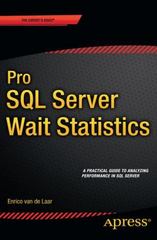Answered step by step
Verified Expert Solution
Question
1 Approved Answer
Please i need good report asap code: Programming:- import numpy as np #import the numpy library import matplotlib.pyplot as plt #import the matplotlib library def
Please i need good report asap 



code:
Programming:-
import numpy as np #import the numpy library
import matplotlib.pyplot as plt #import the matplotlib library
def load_data(path): #define a function
def one_hot(y): #define a function
table = np.zeros((y.shape[0], 10))
for i in range(y.shape[0]):
table[i][int(y[i][0])] = 1
return table
def normalize(x): #define a function
x = x / 255
return x
data = np.loadtxt('{}'.format(path), delimiter = ',')
return normalize(data[:,1:]),one_hot(data[:,:1])
X_train, y_train = load_data('mnist_train.csv')
X_test, y_test = load_data('mnist_test.csv')
#Design the neural network
class NeuralNetwork:
def __init__(self, X, y, batch = 64, lr = 1e-3, epochs = 50):
self.input = X
self.target = y
self.batch = batch
self.epochs = epochs
self.lr = lr
self.x = self.input[:self.batch] # batch input
self.y = self.target[:self.batch] # batch target value
self.loss = []
self.acc = []
self.init_weights()
def init_weights(self): #define a function
self.W1 = np.random.randn(self.input.shape[1],256)
self.W2 = np.random.randn(self.W1.shape[1],128)
self.W3 = np.random.randn(self.W2.shape[1],self.y.shape[1])
self.b1 = np.random.randn(self.W1.shape[1],)
self.b2 = np.random.randn(self.W2.shape[1],)
self.b3 = np.random.randn(self.W3.shape[1],)
#define the activation function
def ReLU(self, x):
return np.maximum(0,x)
def dReLU(self,x):
return 1 * (x > 0)
def softmax(self, z):
z = z - np.max(z, axis = 1).reshape(z.shape[0],1)
return np.exp(z) / np.sum(np.exp(z), axis = 1).reshape(z.shape[0],1)
def shuffle(self): #define a function
idx = [i for i in range(self.input.shape[0])]
np.random.shuffle(idx)
self.input = self.input[idx]
self.target = self.target[idx]
#Feed-forward definition
def feedforward(self):
assert self.x.shape[1] == self.W1.shape[0]
self.z1 = self.x.dot(self.W1) + self.b1
self.a1 = self.ReLU(self.z1)
assert self.a1.shape[1] == self.W2.shape[0]
self.z2 = self.a1.dot(self.W2) + self.b2
self.a2 = self.ReLU(self.z2)
assert self.a2.shape[1] == self.W3.shape[0]
self.z3 = self.a2.dot(self.W3) + self.b3
self.a3 = self.softmax(self.z3)
self.error = self.a3 - self.y
#Backpropogation definition
def backprop(self):
dcost = (1/self.batch)*self.error
DW3 = np.dot(dcost.T,self.a2).T
DW2 = np.dot((np.dot((dcost),self.W3.T) * self.dReLU(self.z2)).T,self.a1).T
DW1 = np.dot((np.dot(np.dot((dcost),self.W3.T)*self.dReLU(self.z2),self.W2.T)*self.dReLU(self.z1)).T,self.x).T
db3 = np.sum(dcost,axis = 0)
db2 = np.sum(np.dot((dcost),self.W3.T) * self.dReLU(self.z2),axis = 0)
db1 = np.sum((np.dot(np.dot((dcost),self.W3.T)*self.dReLU(self.z2),self.W2.T)*self.dReLU(self.z1)),axis = 0)
assert DW3.shape == self.W3.shape
assert DW2.shape == self.W2.shape
assert DW1.shape == self.W1.shape
assert db3.shape == self.b3.shape
assert db2.shape == self.b2.shape
assert db1.shape == self.b1.shape
self.W3 = self.W3 - self.lr * DW3
self.W2 = self.W2 - self.lr * DW2
self.W1 = self.W1 - self.lr * DW1
self.b3 = self.b3 - self.lr * db3
self.b2 = self.b2 - self.lr * db2
self.b1 = self.b1 - self.lr * db1
def train(self): #define a function
for epoch in range(self.epochs):
l = 0
acc = 0
self.shuffle()
for batch in range(self.input.shape[0]//self.batch-1):
start = batch*self.batch
end = (batch+1)*self.batch
self.x = self.input[start:end]
self.y = self.target[start:end]
self.feedforward()
self.backprop()
l+=np.mean(self.error**2)
acc+= np.count_nonzero(np.argmax(self.a3,axis=1) == np.argmax(self.y,axis=1)) / self.batch
self.loss.append(l/(self.input.shape[0]//self.batch))
self.acc.append(acc*100/(self.input.shape[0]//self.batch))
def plot(self): #define a function
plt.figure(dpi = 125)
plt.plot(self.loss)
plt.xlabel("Epochs")
plt.ylabel("Loss")
def acc_plot(self):
plt.figure(dpi = 125)
plt.plot(self.acc)
plt.xlabel("Epochs")
plt.ylabel("Accuracy")
def test(self,xtest,ytest):
self.x = xtest
self.y = ytest
self.feedforward()
acc = np.count_nonzero(np.argmax(self.a3,axis=1) == np.argmax(self.y,axis=1)) / self.x.shape[0]
print("Accuracy:", 100 * acc, "%")
NN = NeuralNetwork(X_train, y_train)
NN.train()
NN.plot()
NN.test(X_test,y_test)
Step by Step Solution
There are 3 Steps involved in it
Step: 1

Get Instant Access to Expert-Tailored Solutions
See step-by-step solutions with expert insights and AI powered tools for academic success
Step: 2

Step: 3

Ace Your Homework with AI
Get the answers you need in no time with our AI-driven, step-by-step assistance
Get Started


